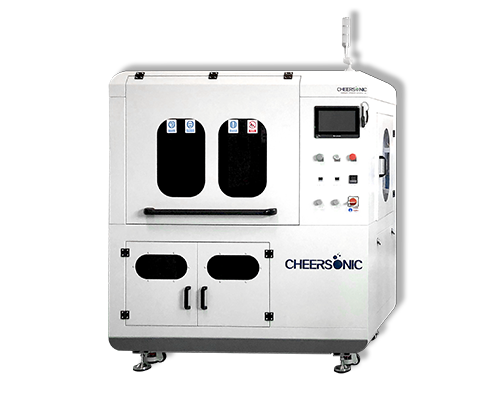Perfluorosulfonic Acid Cation Exchange Membrane
Perfluorosulfonic Acid Cation Exchange Membrane – Membrane Coating – Cheersonic
The perfluorosulfonic acid cation exchange membrane is a perfluoropolymer with a polytetrafluoroethylene structure as the backbone and an alkene ether structure with a sulfonic acid group at the end as a side chain.
The remarkable cation-selective permeability of perfluorosulfonic acid membrane is mainly determined by the hydrophilic sulfonic acid group (SO3-). In an electrolytic cell or battery, the perfluorosulfonic acid membrane acts to separate the cathode and anode liquids and gases.
After water absorption and swelling, due to the existence of SO3- group, its electronegativity repels anions and attracts cations, so under the action of an electric field, several water molecules carried by cations and cations can be allowed to pass through the swollen pore size, thereby having Excellent conductivity and ion selectivity.
However, the water content of the membrane seriously affects the conductivity of the membrane. The lower the water content of the membrane, the lower the conductivity. This is why the membrane needs to be activated in water for a period of time during the application of the hydrogen-rich water cup. (Hot water around 50°C will activate the membrane faster)
However, the size of the ion channel after the perfluorosulfonic acid membrane absorbs water and swells is limited to a certain extent. Not all cations can pass through the membrane smoothly, and cations with an excessively large size may even block the membrane and cause the membrane to lose its activity.
In general, perfluorosulfonic acid ion exchange membrane has the best comprehensive performance among various ion exchange membranes, and has been widely used in the fields of hydrogen evolution machine, hydrogen-rich water cup, vanadium battery, fuel cell, electrolyzer and precious metal recovery. application. However, it is indeed more expensive than other membranes, and there are also problems such as vanadium ion permeation and methanol permeation. It is hoped that researchers can go further, improve the performance of the membrane and reduce the cost.
Ultrasonic spray fuel cell catalyst coating system can produce highly uniform, repeatable and durable coatings. Our ultrasonic spraying can well control coating properties, significantly reduce material usage, and reduce maintenance and downtime.
Our company’s ultrasonic spraying equipment can be sprayed on a variety of different metal alloys, including the preparation of platinum, nickel, iridium and ruthenium-based fuel cell catalyst coatings, as well as PEMs, GDLs, DMFCs (direct methanol fuel cells) and SOFCs (solid Oxide fuel cell) manufacturing. The battery manufactured by this technology has the characteristics of high battery load and high battery efficiency.


